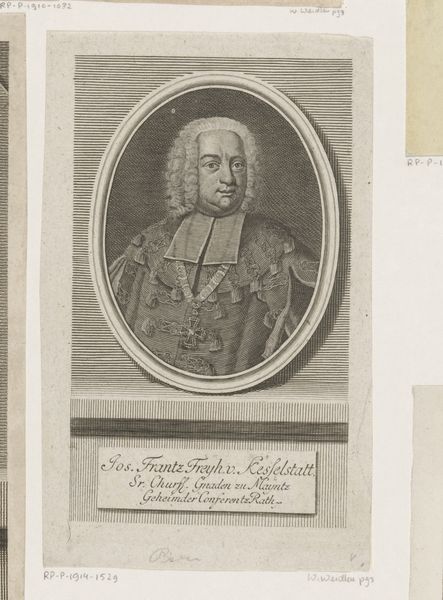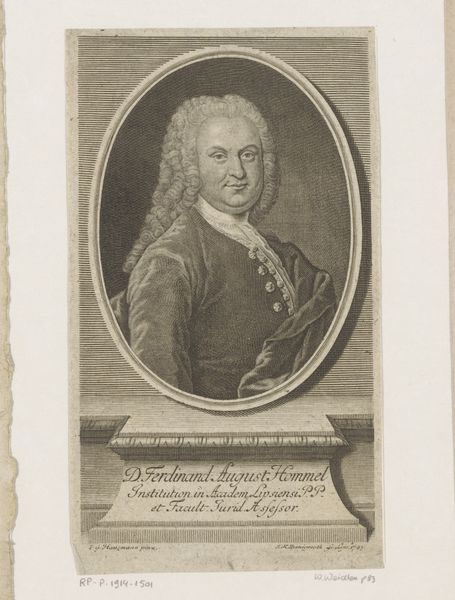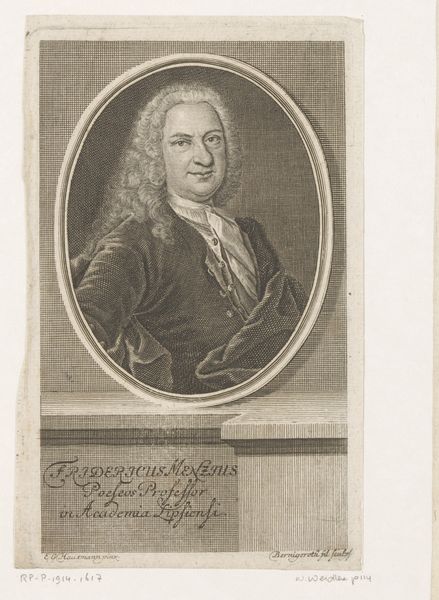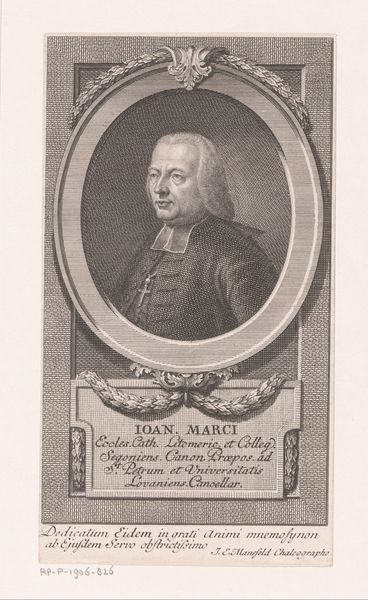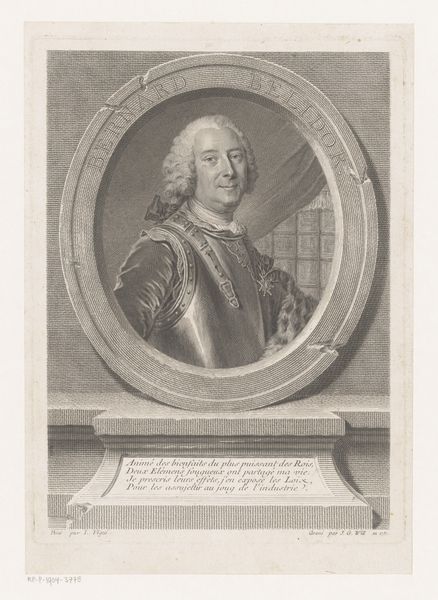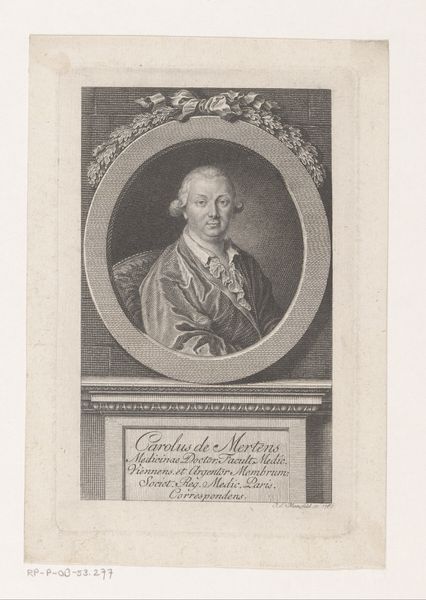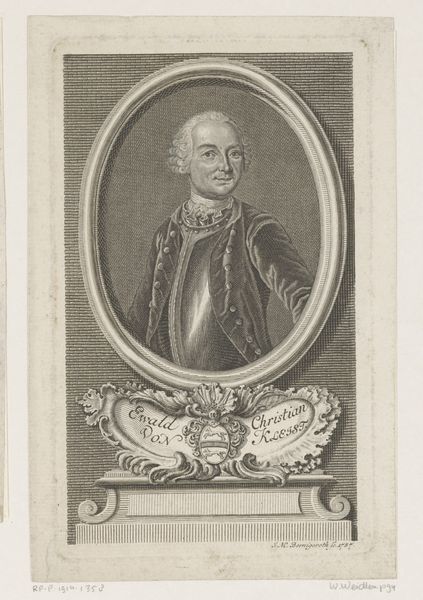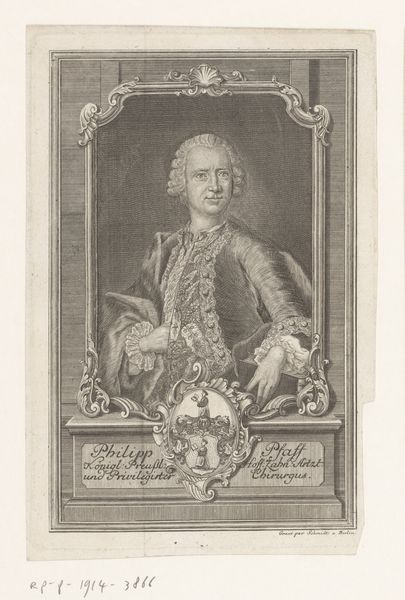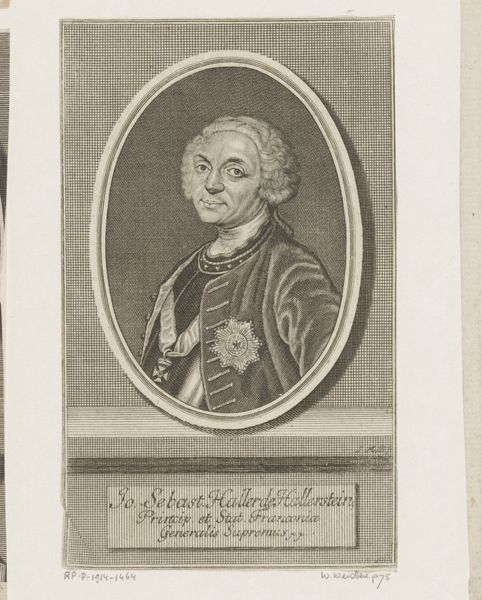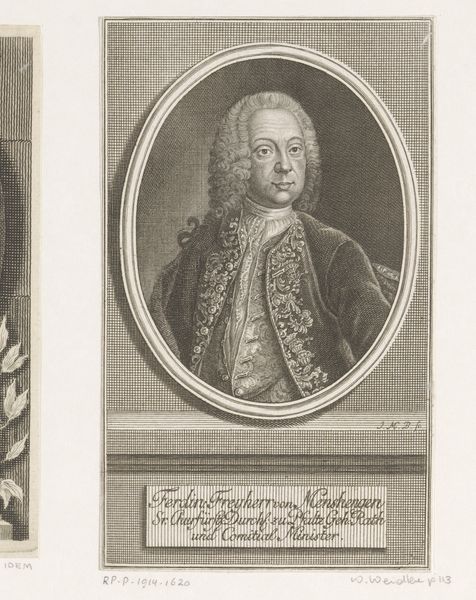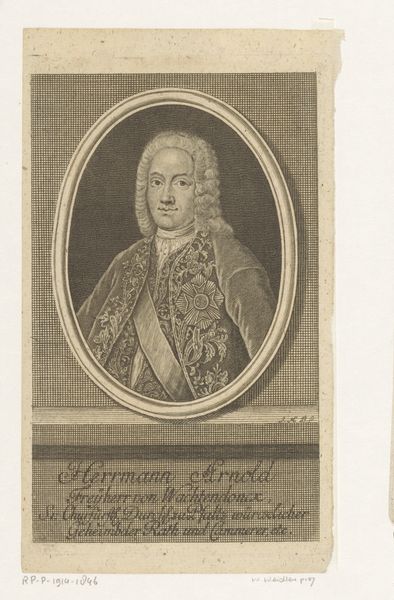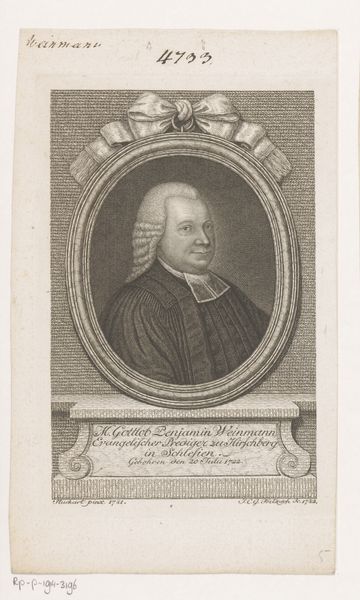
engraving
portrait
pencil drawn
light pencil work
baroque
old engraving style
line
academic-art
engraving
Dimensions: height 152 mm, width 88 mm
Copyright: Rijks Museum: Open Domain
Curator: Here we have Johann Martin Bernigeroth’s engraving, "Portret van Samuel von Schmettau", which dates sometime between 1741 and 1767. What are your initial thoughts on it? Editor: Austere, yet strangely compelling. The sharp lines give it a crispness, but the overall effect feels somewhat melancholic. It's fascinating how much emotion can be conveyed with so little variation in tone. Curator: Indeed. Consider the implications of engraving as a process in this context. Each line, meticulously etched, represents a decision, a physical action taken to portray Samuel von Schmettau. The labor involved is evident, and the reproductive nature of the print suggests a wider distribution, a democratizing of the image, if you will. Editor: Yes, and the very symbols he wears – the sash, the star – speak to an intricate hierarchy. It's not merely about depicting his likeness, but communicating his status, his importance within a rigidly structured society. Those symbols resonate even now. Curator: Let’s think about the materials: copper, ink, paper. Common materials elevated through skilled craftsmanship into a representation of power. Was it meant to elevate von Schmettau in a certain way to specific audiences? What does mass reproducibility do to ideas about fine art in this period? Editor: Beyond his professional stature, I wonder about the psychology of presenting oneself in this way. There’s a sense of duty, of gravity. It's a deliberate construction of self, using symbols as a kind of shorthand for qualities that couldn’t otherwise be captured so efficiently. Curator: Absolutely. But it's not just about individual presentation, is it? These portraits often served to reinforce social structures. Bernigeroth's craft supported a world in which Von Schmettau’s title meant access, power, privilege, as his position shapes both material and cultural conditions. Editor: Looking at it this way, it almost feels like a codified language, each element deliberately chosen for its significance, speaking to notions of honour and service that resonate even now, albeit differently. It gives such context to an engraving, otherwise perceived as an easily reproducible, almost disposable object. Curator: Thank you, this perspective enriches our understanding. The engraving now presents not just an image of an individual but a nexus of production and representation. Editor: And it really speaks to the enduring power of symbols to shape our understanding, even across centuries. A fantastic piece, once you dig beneath its seemingly simple surface!
Comments
No comments
Be the first to comment and join the conversation on the ultimate creative platform.
